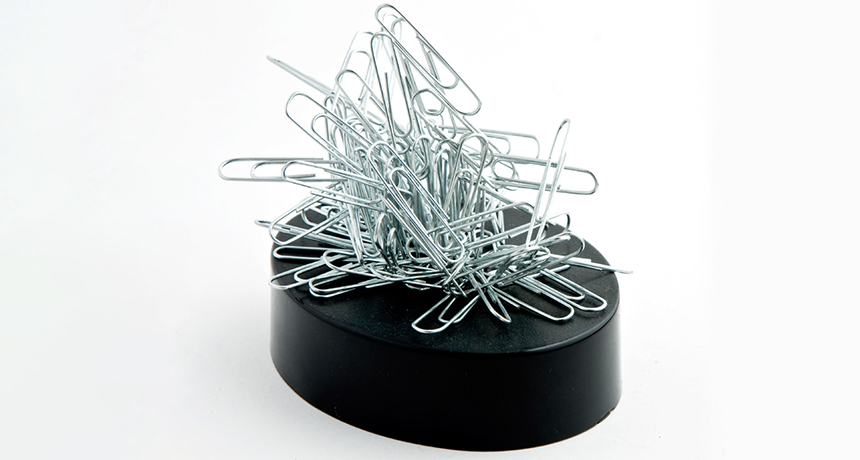Magnets that kill cancer cells
Researchers devise a way to use magnets to make cells self-destruct

Magnets can be used to move types of metal from a distance. Scientists recently developed a technology that uses magnets to trigger a cell’s demise.
istockphoto
Magnets hold things to our refrigerators, and inside compasses they help us find our way. Now researchers have found a way to use magnets like a remote control to turn on cell-killing, metal beads. The technology may point to new treatments for diseases such as cancer, which kills more than 7 million people every year.
Scientists at Yonsei University in South Korea developed the new technology, which can flip a “death switch” on cells, causing them to self-destruct. The researchers described how they used their method to kill cancer cells in the journal Nature Materials.
The outside surface of every cell contains many receptors, each functioning like a chemical lock. When the appropriate chemical slides into a receptor, this chemical acts like a key, unlocking some particular action of the receptor. In a sense, these receptors allow the outside world to communicate with the interior of cells.
Activating one of these receptors, known as death receptor 4, will release a signal that instructs the cell to die. For the Yonsei team, the trick was figuring out how to activate that receptor.
They turned to nanoparticles of iron. These bits are far too small to be seen with the human eye (and much smaller than the cells themselves). The researchers attached the metal particles to proteins that can find and stick to the death receptor.
In tests, the researchers added the iron-protein combos to a lab dish containing colon cancer cells. As the team had hoped, the protein “glued” the nanoparticles to the cells. Then the scientists used magnets to pull on the nanoparticles — and flip the death receptor’s switch. At once, cells started to die. After 24 hours of this magnetic therapy, more than half of the cancer cells were dead.
“They’ve identified a major opportunity for magnetic nanoparticles [in medicine],” bioengineer Andrew MacKay told Science News. MacKay, who did not work on the new study, is from the University of Southern California. He and other bioengineers use knowledge about technology to better control living things.
It’s too soon to know whether this magnetic therapy will be able to distinguish healthy cells from diseased cells. And that’s important because the surface of healthy cells also contains the vulnerable death receptors. So the success of this potential treatment will depend on whether the scientists can design their nanoparticles to attach only to cells responsible for disease.
Power Words
cancer A disease caused by an uncontrolled division of abnormal cells.
bioengineering The application of technology for the beneficial manipulation of living things.
iron A strong, hard metal that’s often used in construction.
nano Something characterized as being around a nanometer — one-billionth of a meter long — in at least one dimension.
protein A molecule made of one or more long chains of amino acids. Proteins are an essential part of all living organisms, especially the structural components of body tissues.







